'TRIUMPH' - Lwando Dlamini
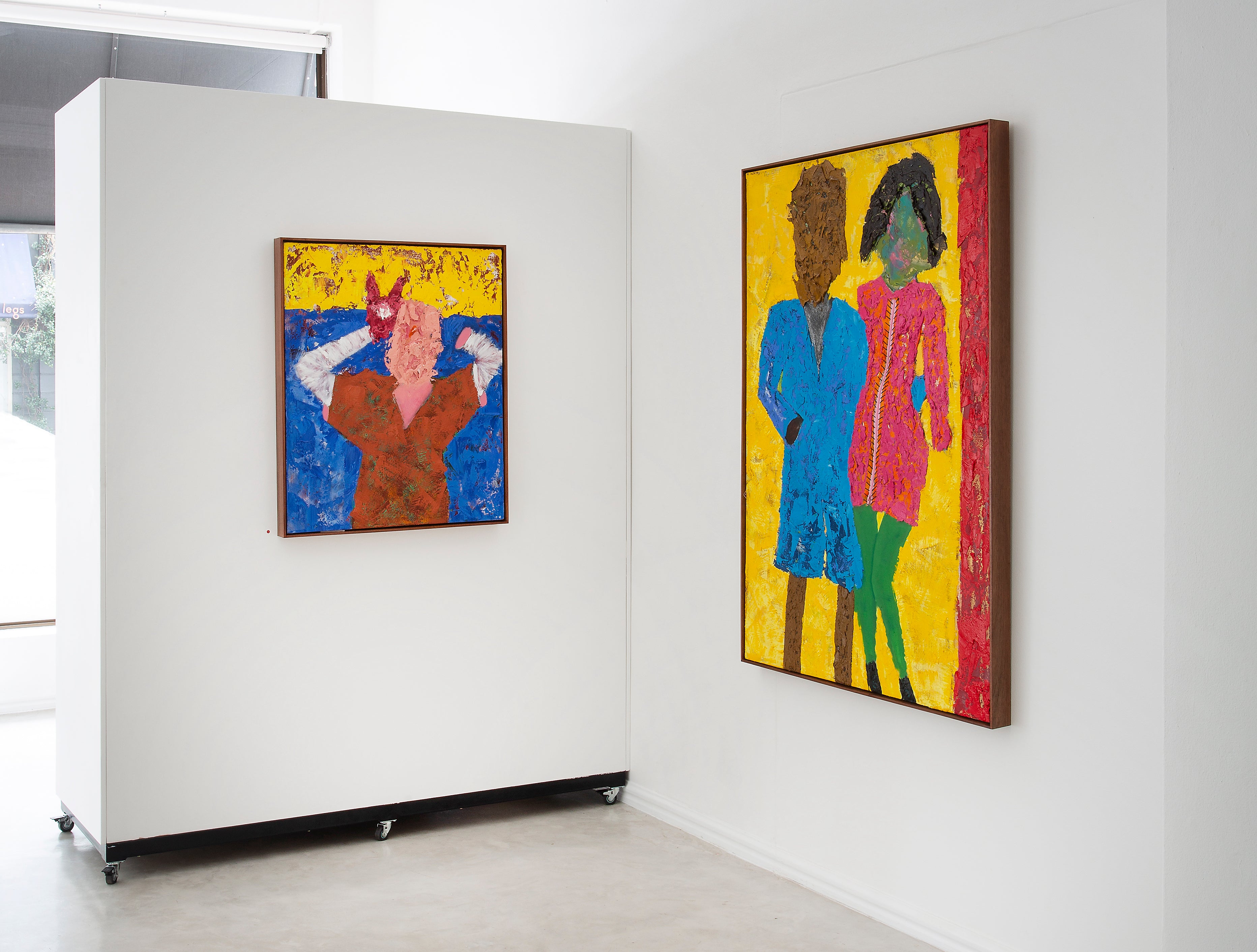
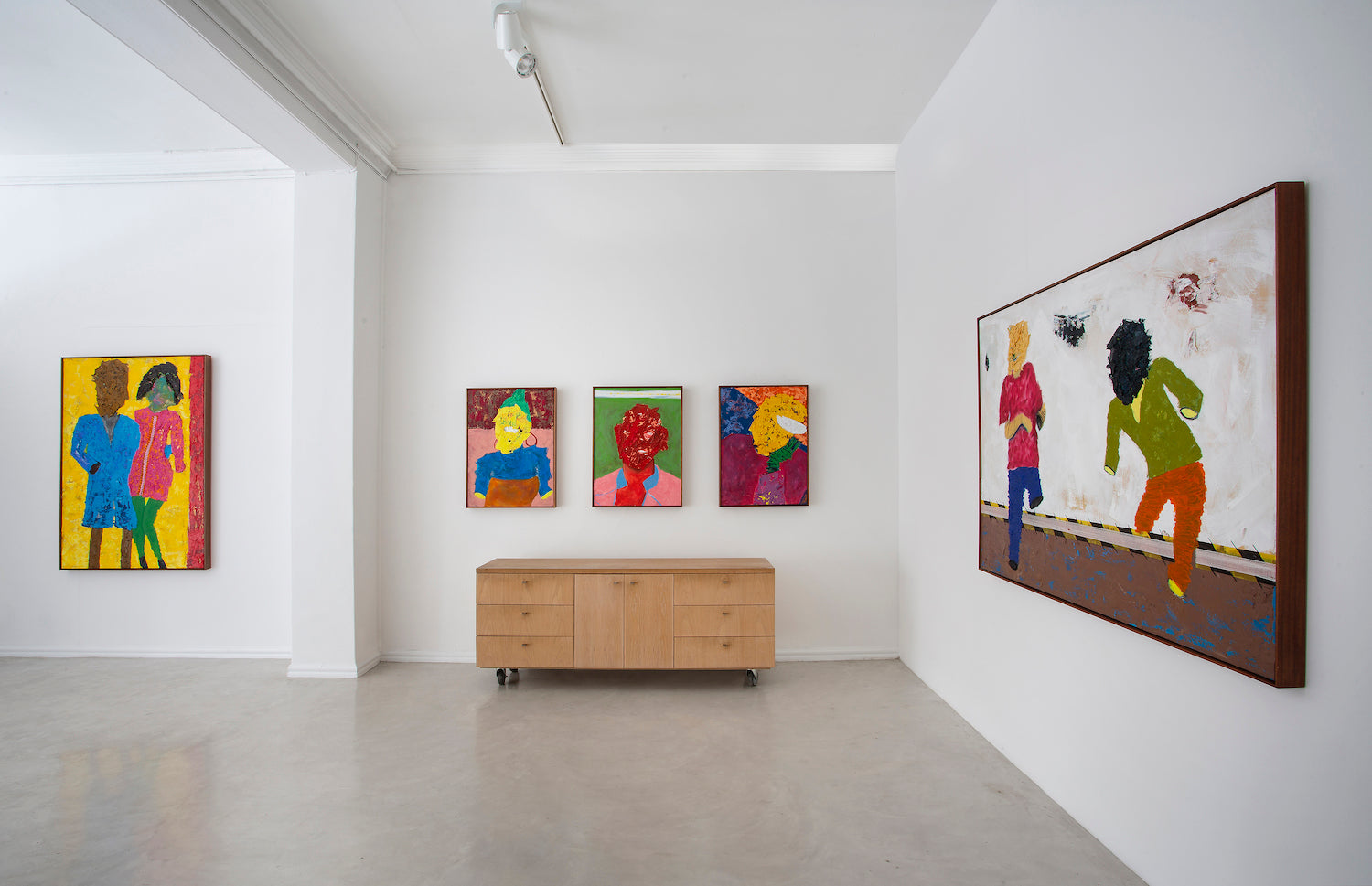
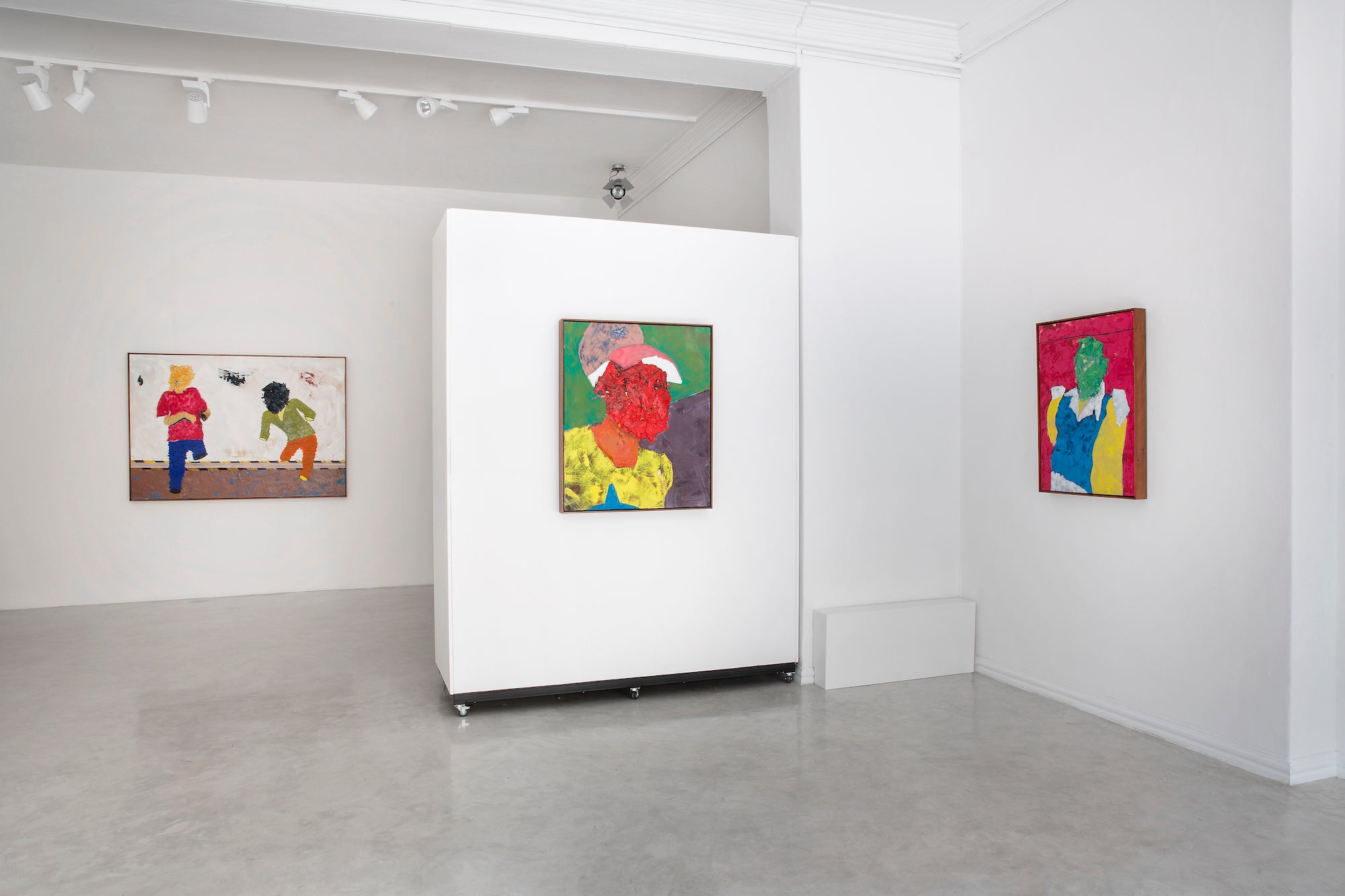
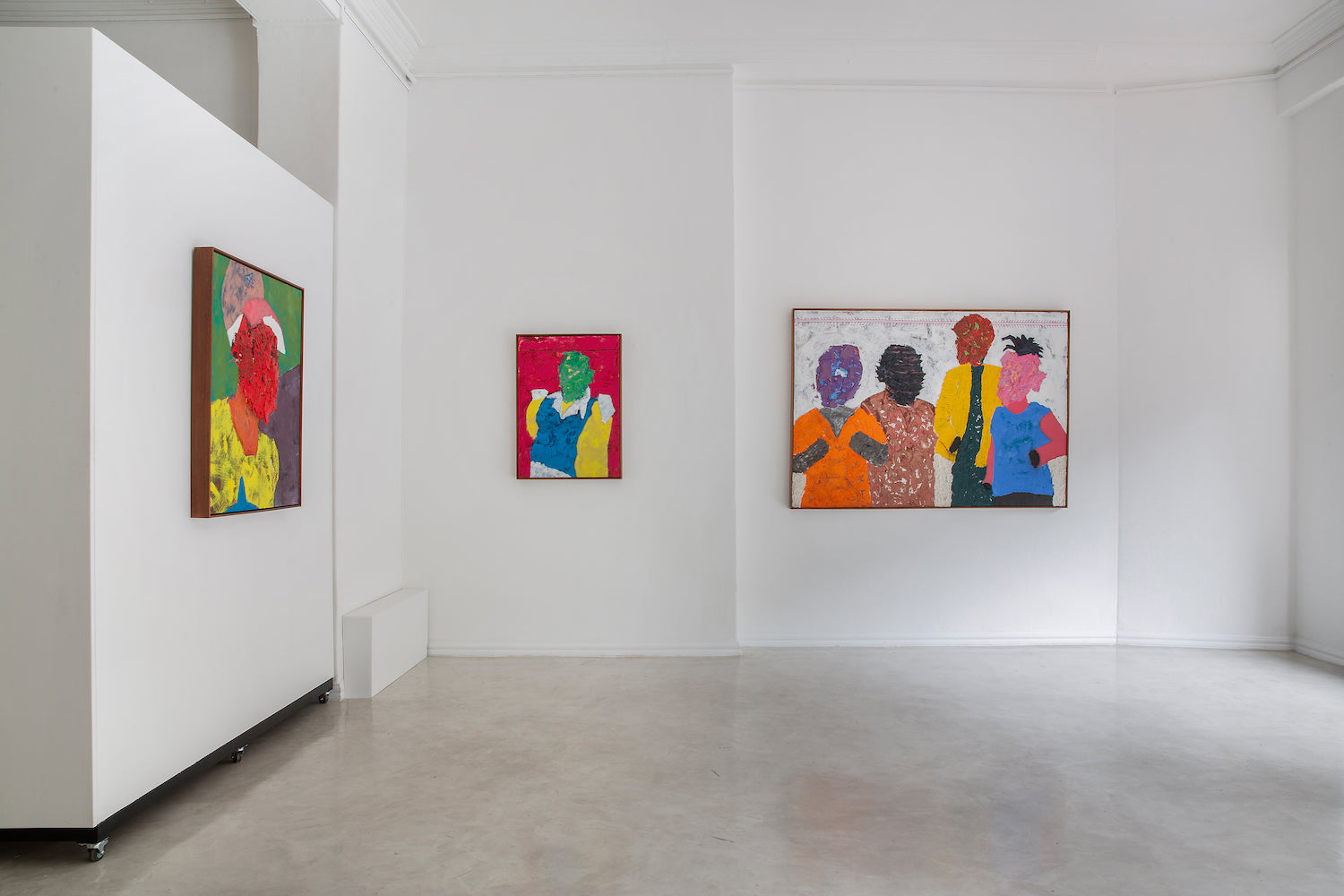

Collection: 'TRIUMPH' - Lwando Dlamini
08.07.20 - 31.08.20
EBONY/CURATED, Cape Town
Text by Amogelang Maledu
Triumph in the time of Black ontological terror (1):
Nigga, we gon’ be alright
Nigga, we gon' be alright
Nigga, we gon' be alright We gon' be alright
Do you hear me, do you feel me? We gon' be alright (2)
I want to feel guilty observing the celebratory moment in Lwando Dlamini’s effervescent debut solo exhibition and the personal traumas over which he has triumphed. How can I not experience cognitive dissonance when momentous occasions of Black joy as resistance appear before me in a world polarised by multiple antagonisms that threatens the ontology of people seeking that jouissance?
We are currently at the peak of a global pandemic that is disproportionately killing Black people; engulfed with the terror of systemic racism à la police brutality both in South Africa and America – again targeted specifically at Black people; the heinous hate crimes of gender-based violence in South Africa and the confounding efforts of the City of Cape Town to evict Black people from their own land in communities such as Hangberg, Khayelitsha, Ocean View and several other communities in different parts of the Western Cape.
As I think through the excitement of the announcement by the South African minister of Sport, Arts and Culture, Nathi Mthethwa of the reopening of museums, art galleries, archives, libraries, cinemas and other cultural institutions, what quickly reminds me of the current crisis of our time is an Internet meme (3). The one Hannah Jane Parkinson (2016) calls “the perfect devil-on-the-shoulder ... for these times of geopolitical global despair’’: evil Kermit. The meme that has a menacing twin that seeks to sow seeds of doubt in your intuitive, often good intended decisions and legitimate feelings, threatening to corrupt them with nihilism. And in my case, attempting to rob me from the necessity of celebrating the incessant commitment of colouring the bleakness of our lives with the unrelenting resilience, sometimes coping mechanisms of Black survival: artistic cultural production amidst the chaos.

Figure 1:
Author’s self-generated evil Kermit meme illustrating her cognitive dissonance in celebration of Lwando Dlamini’s debut solo exhibition, ‘Triumph’ in relation to the current global socio-political and economical context.
Dlamini is not immune to his artistic practice serving as a necessary salve and survival praxis for his life. Born in Engcobo, Eastern Cape and raised in one of Cape Town’s largest horticultural areas, Philippi, Browns Farm – a township that sits on a large aquifer with 50% of its vegetable produce sold through South African retail giants in the city of Cape Town (Sullivan, 2016). This breadbasket of Cape Town does not only offer leafy vegetables and tasty fruits from your local Woolworths. Dlamini warns, “Philippi is rough.’’ The township guaranteed his street smartness, yet that was still not enough in discouraging his corrupt police assailant from sadistically attacking him for no reason at the age of 20 on his way home at night from a neighbourhood house party. The attack left him unconscious, in a coma for approximately three weeks, permanently damaging his left eye and leaving him with long lasting effects of memory loss. A routinised incident going by the unending reports of ghettoised Black violence: the abjected, the dehumanized and the synonym of the social death of Black being. The awareness of sporadic terror inflicted unto his being as a Black man in his own neighbourhood is something that he is constantly aware of. As I think through Dlamini’s life experiences and the impact growing up in Philippi has had on his art, I ask him about the latest news I saw of a shootout in the township in the beginning of this month, following the untimely brutal murder of 17-year-old Amahle Quku, whose bruised and naked body trended on Facebook last month. One of the many latest incidents in a spate of gender-based violent attacks on the lives of women, children and the LGBT community in South Africa. Dlamini responds to my observation in the news with the uncomfortable acknowledgement of his life’s disposability and the anticipation of hopefully having the means to protect it through Black fugitivity (4) – refusal – resistance and ultimately, triumph:
... I think growing from my kasi (5,) one kind of
quickly learns and accepts the transient nature of our existence and just hope they make it out alive. I just need a little more time my sista and I’m getting my family the phuck out of that shit whole. I want [to] go as far, far from that place as I can.
This is the state of the ontological terror of Black life; even during what should currently be the most sensitive time of our collective humanity, Black people need to constantly reiterate that their lives matter because their bodies continue to be disposable – at the bottom of the socially constructed hierarchy of humanity. In his book Ontological Terror: Blackness, Nihilism and Emancipation (2018) Calvin L. Warren argues that Black people’s insistent declarations, through current contemporary global protests, that their lives matter is syllogistically reasoning if time and time again these declarations become outpost reminders that happen at sensational moments of hyper-visible terror and Black torture. Warren (2018: 2) instead suggests that maybe the fundamental question here is, “is the black, in fact, a human being? Or can black(ness) ground itself in the being of the human?’’
This metaphysical inquiry of the ontological terror of Blackness, as per the help of Warren’s theorisation and questioning, underscores my framework of thinking about Dlamini’s dynamic dismembered figures in his paintings. Abstracted faces, colourful schemas of stitched and bandaged bodies seemingly zestful in their settings yet gesturing at their ailment through their occasional incisions, threaded zippers cum-stiches on the canvas or spliced chevron and reflective tape stapled onto them. The innuendos of pain in this body of work – both literally and figuratively – is rampant but not necessarily complacent or nihilistic like evil Kermit. Herein, the suggestive terrorised and perhaps violated dismembered figures annunciate their pain while oscillating with the lucidity and deliberateness of Dlamini’s impasto marking making that is invested in creating a world of self-determination, triumph, hopefulness and colour. Dlamini informs me:
I think I’ve spent too much time in the darkness of
my past, where I am mentally at this point, I just want
happiness and bright colours make me happy.
In Eqongweni III (The Battlefield) the two dismembered figures elucidate the danger zone their entering announced not only by the title of the work, but similarly by their mutilated limbs crossing the demarcated chevron tape: a known symbol of caution and danger. What does their confidence and adamant stances on playing with danger captured in the painting suggest? The fearlessness of engaging with terror because they have done it before hence, they have dismembered bodies; or because for them danger, fatality and fracturing are routinised and ritualised and as such, what is the worst that could possibly happen if they cross over? Perhaps another reading can suggest that they might have successfully crossed the chevron tape and concurrently painted engaged in the battlefield, illustrating their adamance in their resilience to overcome danger – adamant in their resistance to defeat that which endangers their joy and survival. Or are they engaged in a battlefield against each other? The black figure in an active stance, likely ready to confront or attack; and the yellow figure a lot less active, perhaps taken aback by the aggression? I am opening the plethora of interpretations in this work because amidst Dlamini’s outspoken fascination with the (Black) human body and its ability to endure, I am also interested in the opaque rendering of Dlamini’s paintings and their engagement with an ontological terror that can be interpreted in multifaceted ways. After all, in the context of ontological terror or trauma and the resistance thereof, it is Aïcha Diallo (2019: 126), quoting J. Brooks Bouson, that speaks of trauma’s ability to “result not only from a single assault, but also from a constellation of life’s experiences, a prolonged exposure to danger, or a continuing pattern of abuse’’.

Figure 2:
Eqongweni III (The Battlefield), 2020, Oil, thread, bandage, chevron tape, scrim and charcoal on canvas, 120 x 170 cm
Apart from the identifiable signature of Dlamini’s mutilated figures, the consistent use of pink and red hues is an infallible reminder of humanity: suggestive of the colour and coded vulnerability inside universal human bodies. As the proverb goes “we all bleed red’’. More so, Dlamini considers pink as a forgiving colour. However, does the ontological terror of certain bodies, i.e Black bodies, disappear at the rationalisation of such nice clichés, solidified by philosophical ideas of metaphysics that systemically reproduces pain through other insidious forms of violence that we are begetting to see in our communities unevenly, affecting the already marginalized first? Dlamini, in acknowledging the personal triumphant moments in his life, such as overcoming death twice and his enthusiasm in conquering his adversities, does not nullify the fact that his existence as a Black man currently residing in Philippi, Cape Town is not a perpetual target of violence and trauma. As Steve Biko, in his magnum opus, I Write What I Like (1987: 110) notes:
One need not try to establish the truth of the claim that black people in South Africa have to struggle for survival. It presents itself in ever so many facets of our lives. Township life alone makes it a miracle for anyone to live up to adulthood. There will be a situation of absolute want in which black will kill black to survive. This is the basis of vandalism, rape and plunder that goes on while the real sources of evil – white society – are suntanning on exclusive beaches or relaxing in their bourgeois homes.
Thus, I think Dlamini’s preoccupation with his Being as Black living in Philippi and insisting on wanting to focus on his present joys and personal triumphs is revolutionary: an act of refusing to solely focus on the stymies of life and rather prioritises his Black joy as a legitimate form of defiance. His graduation exhibition in 2017 at Ruth Prowse School of Art had similar concerns, titled Inzondelelo (the act of never giving up).
Kendrick Lamar’s widespread and critically acclaimed music album To Pimp a Butterfly (2015) was influenced by the American rapper’s trip to South Africa. He visited known historical sites of national trauma in the country such as Nelson Mandela’s jail cell on Robben Island that left an impressionable mark and furthered his understanding of the plight of Blackness and its perpetuity in the contemporary post (6) -colonisation/slavery and apartheid society. The seventh song on the album, Alright, quoted in the title of this essay above, has been and continues to be an emblematic and protest anthem of aspirational justice in contemporary society; a song that insists that, eventually, we will overcome the ontological terror of Black being. The song functions in the similar comfort Dlamini offers us in his painting Better Tomorrow. The comfort that things will get better, that our multiple resistances are not in vein and we gon’ be alright.
Better Tomorrow may be a clue in telling us a little more about Dlamini’s triumph and his relation to the causal zeal of endurance that is intrinsically linked to his survival today. Better Tomorrow, with its contemporaneous figuration and assemblage of symbolically charged materials of terror – reflective tape stapled on a chevron strip, disjointing, mutilating the abstracted and hydridised figure – suggests a threat to the perpetual nihilism it inhabits: hope. Better Tomorrow illustrates that despite the visible markings of multiple mutilated incisions on its figure, there’s still a sublime intactness to it: the resilience to endure numerous assaults on its figuration.
 Figure 3:
Figure 3:
Better Tomorrow. 2020. Oil, staples, chevron and reflective tape on canvas. 100 x 76 cm.
Similarly underscoring Dlamini’s recognisable style of abstracted (dis)figuration – whether unintentional or not – is the historical weight of resistance this painterly tradition has in both modern and contemporary Black African art. Dlamini’s Triumph also potentiates to the fact that his agency of choosing a charged painterly tradition of abstraction as a young Black artist is because of other older generation Black artists. Artists such as the late David Koloane and Pat Mautloa, whom Dlamini considers in high regard, that insisted on liberating their art from the figurative painting traditions of Township art in the 1980s in apartheid South Africa. These artists instead experimented and deviated from the confines of what a Black artist was meant to paint during the time, often expected to be explicitly painting the political situation of apartheid society in the township setting (Enwezor and Okeke-Agulu 2009: 42). This act of refusal, interpolation and subsumed appropriated negation of a Euro-American painting tradition proved successful in profoundly impacting the artistic cultural production of art and artists in (South) Africa, evident in the work of Dlamini. Much like Koloane, Mautloa and their contemporaries, Dlamini’s paintings are not necessarily about essentialising township life. Their expressionist and new figuration painting styles can in fact be informed by how the effects of injustices themselves are abstract: systemic in that their nomenclatures are not always so figurative and evident. It is the tyranny of the perpetual news headlines of Black death in contemporary South Africa that illustrates to us that the insidious ramifications of apartheid are concealed by the normalcy of Black violence. Thus this tradition of abstract figuration and expressionism by Black artists in the 1980s and with contemporary Black South African artists like Dlamini, favour this way of painting because such styles are a “more loaded vehicle for expressing in paint the [implicit] apartheid culture of violence’’ (Enwezor and Okeke-Agulu: 42) that Dlamini and many others like him are expected to endure.
The tonality of Self Portrait II seems unfretted by the burden of representation, Dlamini as a person is not immediately recognisable. The artist’s portrait experiments with gestures, materiality, texture and colour unbothered by traditional realism-based genres of artist portraits. However, the clues of his reflection in the portrait is beknown to me as I recognise what could stand in for the artist’s eye marked by a beige-white oval in the figure. During the attack on his way from the neighbourhood house party in Philippi, Dlamini picked up a golf club to use as armour should he need to enroute home, but instead his police assailant used the club against him and hit the left side of his head resulting in irreversible damage to his left eye cornea. He only relies on his right eye to see. However, Dlamini insists – he does not want pity – and that is what Triumph is ultimately about. The artist confides in me over Whatsapp after having a nightmare that “it is only now (8 years later) that I am slowing mentally healing from the police attack that happened to me in 2012 late Sept[ember]’’.

Figure 4:
Self Portrait II. 2020. Oil, thread and zipper on canvas. 82 x 59 cm
Thus, my cognitive dissonance in thinking about Dlamini’s invocations of triumph is a dissonance grounded in the simultaneous contemplation that is a current preoccupation – whether I like it or not – of the bleakness of an unprecedented global health pandemic and terrorisation that is disproportionately brutalising people that look like me and him. But, reflecting on Dlamini’s deserving moment of celebration as a legitimate form of negating Black ontological terror is also valid. In fact, Cornel West (1994: 23) concedes that Black nihilism’s threat is not just mere survival but hope too, amoured with our intergenerational cultural and creative praxis imbued to shield us from hopelessness and (as per Dlamini’s graduate show body of work) Inzondelelo (the act of never giving up). Furthermore, reading Dlamini’s Triumph in the context of the multiple assaults and traumas of not just his life alone but that of contemporary Black life as it stands, is resistance. While Lamar’s Alright assures us that we will overcome, Dlamini’s Triumph takes the being of both his resilience and that of Blackness further and announces, not only will we overcome but we will endure triumphantly. Dlamini’s Triumph is an eclectic reminder of self-determination and the spirit of perseverance – a trip of overcoming Eqongweni III (The Battlefield) that will sustain Better Tomorrow(s).
_____________
1: I use the term ontological terror to specifically relate its syntax to the theorisation of Black nihilism and its potential threats. This is especially influenced by some of the ideas of Calvin L. Warren’s book Ontological Terror: Blackness, Nihilism and Emancipation published in 2018.
2: The chorus of Kendrick Lamar’s song Alright, sang and co-produced by Pharrell Williams. The chorus became and continues to be a mantra and rallying protest song of the Black Lives Matter movement especially in America.
3: An image, video or piece of text – typically humorous in nature – that is copied and spread rapidly by Internet users, often with slight variations.
4: The word Black fugitivity is often accredited to Tina Campt, a Black feminist theorist of visual culture and contemporary art. I, however invoke the phrase of the word through Fred Moten’s syntax – a poet and social theorist who adapts the phrase in his book Stolen Life (2018: 131) defining Black fugitivity as “a desire for and a spirit of escape and transgression of the proper and the proposed.
5: The etymology of the word Kasi comes from the Afrikaans word lokasie which translates as location in English. Kasi is also often synonymous to Township in South African lexicon. These are underdeveloped residential areas in the peripheries of city districts as a result of apartheid racial spatial planning.
6: I use the word ‘post’ as an identifiable misnomer to speak about the end of the oppressive structures listed after the word in recognising that their lawful existence might be abolished but their systemic ramifications live on thus calling our current society post-colonial, post-slavery or post-apartheid is disingenuous if their continued effects in contemporary society are not acknowledged.
More exhibitions
-
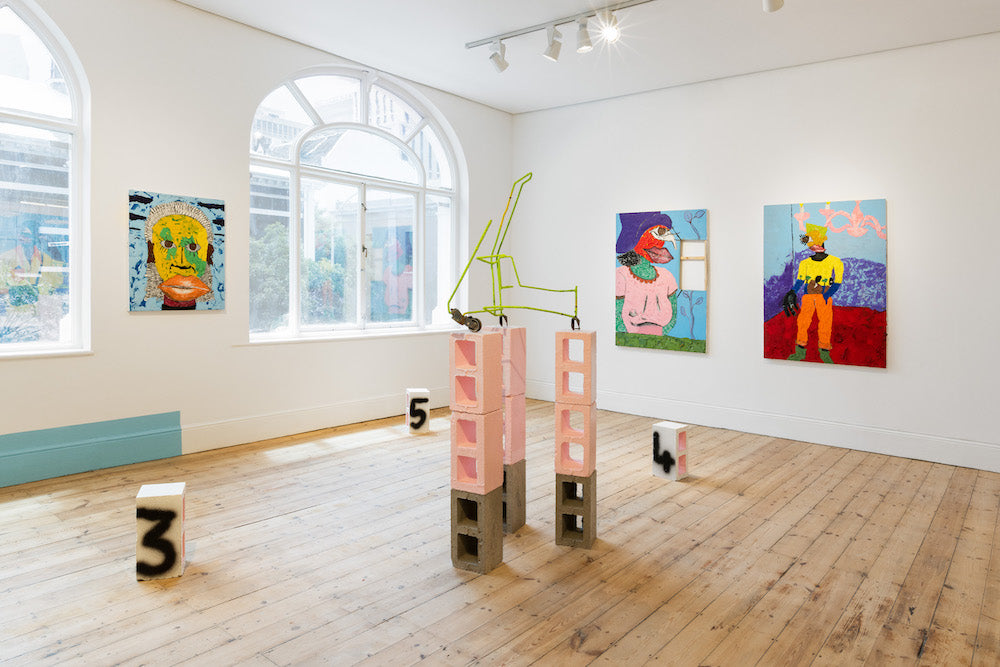
'Learning to be -less afraid- braver' - Lwando Dlamini
EBONY/CURATED Loop Street, Cape Town Wednesday 2 February 2022 Continues until 26th...
-
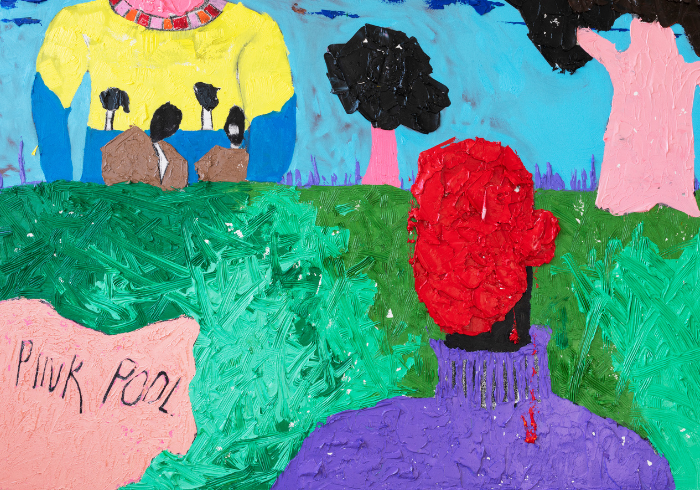
FNB Art Joburg 2021
28.10.21 - 07.11.21 EBONY/CURATED is pleased to present a selection of works...
-
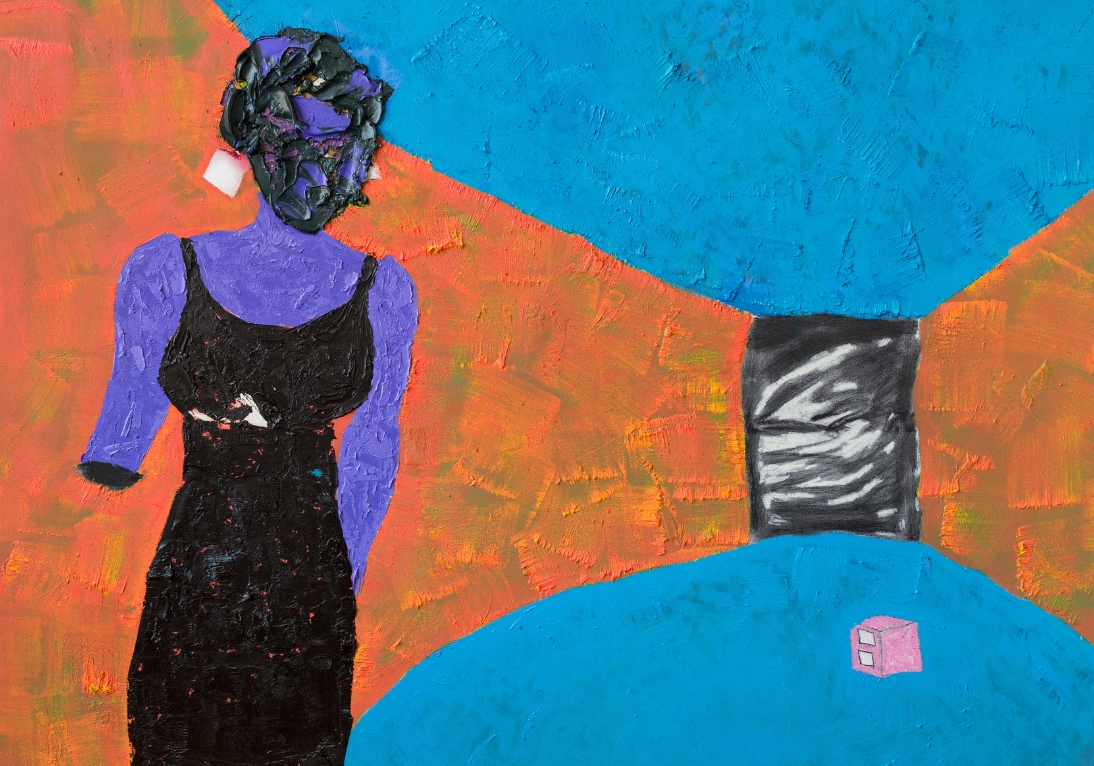
African Galleries Now 2020
African Galleries Now X Artsy23.11.20 - 13.12.20___Presented by the African Art Galleries...



